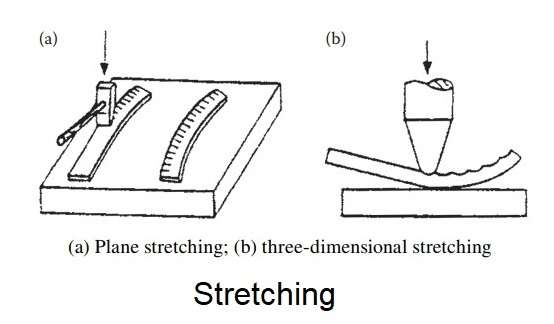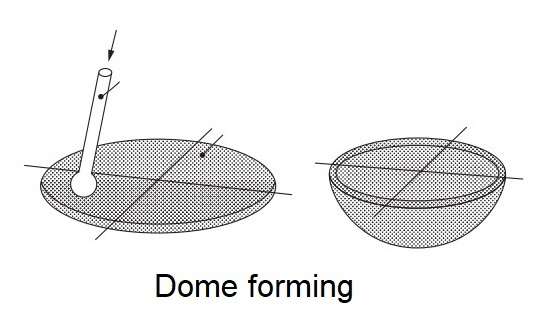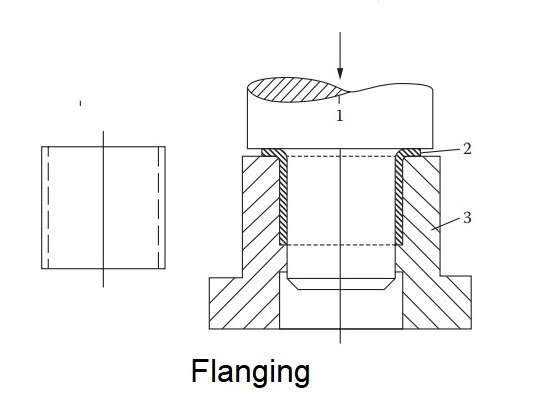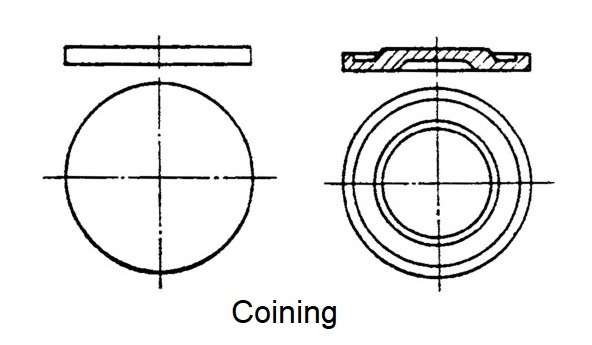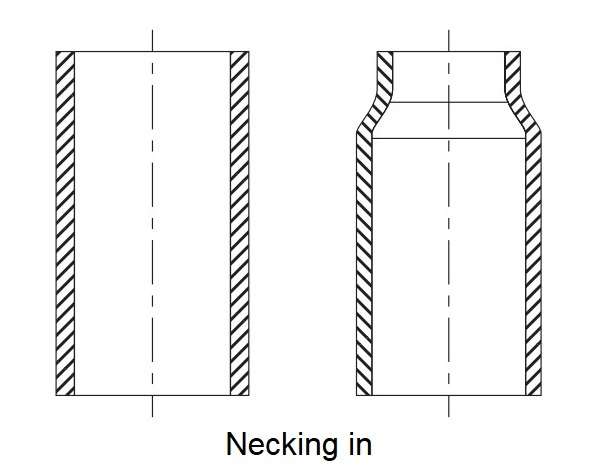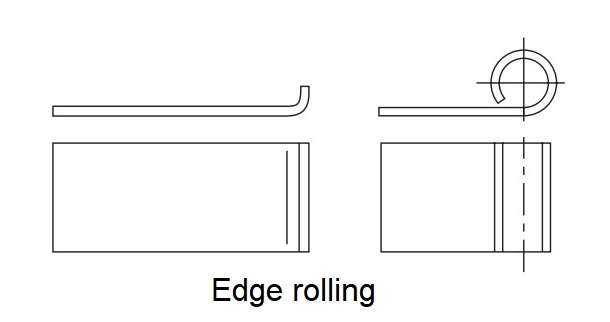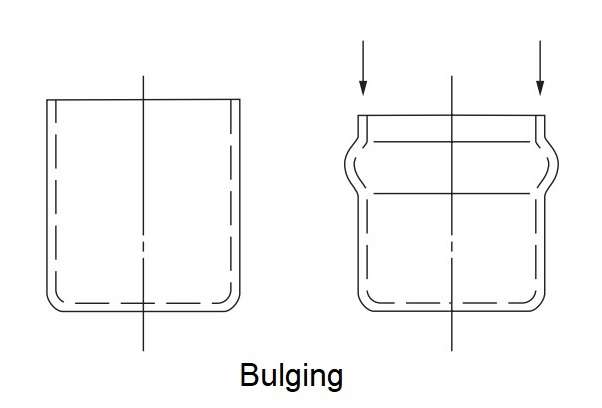Sheet Metal Forming with Compressive Stresses
Sheet metal forming, including aluminium forming, is widely used in industry. The most rational way to classify metal sheet forming processes is to follow a stress state systems.
The main sheet metal forming groops are processes with:
- predominantly compressive stresses,
- combined compressive and tensile stresses,
- predominantly tensile stresses,
- bending, and
- shear.
Predominantly compressive stresses
Now we will look at the first of these groups. To this groop belong processes where the flow in the deformation zone mainly is established by a compressive load from the surroundings. Examples are:
- Stretching.
- Dome forming.
- Cold heading of cups.
- Flanging
- Coining
- Necking-in.
- Edge rolling.
- Bulging.
Stretching
In this process, a sheet metal work piece is shaped by stretching one of its sides by means of hammer blows or by notching with a wedge-shaped tool. The process, which is very flexible, can be carried out as well by hand as in special machinery.
Dome Forming
In this process, a dome is formed from a sheet metal blank by local stretching made by multiple blows from a rounded hammer-shaped tool. The process, which is very flexible, can be carried out as well by hand as in special machinery.
Cold Heading of Cups
In this process, the rim of a cup is reduced in length and increased in thickness with the aid of two counteracting tools.
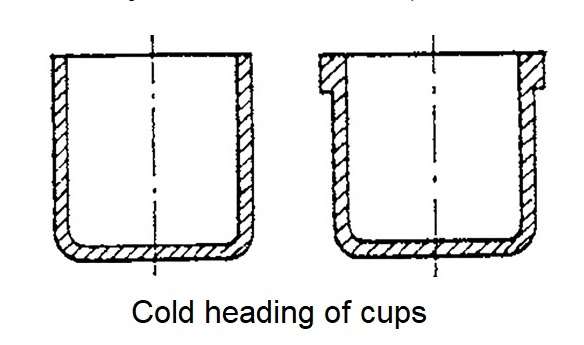 Figure 3 – Cold heading of cups
Figure 3 – Cold heading of cups
Flanging
In this process, a flange is formed on a hollow component by means of a punch and a die.
Coining
The manufacture of coins, tokens, etc , can be considered as well a sheet metal forming process as a bulk process The process takes place in special presses and highly loaded tools, often with a ring around the upper and lower coining tool, to increase the hydrostatic pressure in the process and to improve the coining precision.
Necking In
In this process, the open-end diameter of a hollow component is reduced.
Edge Rolling
In this process, the edge of a sheet or a sheet component is rolled back upon itself, usually by means of a punch and guide to give rigidity or a better appearance to an article.
Bulging
In this process, an outward channel is formed in a hollow component by the application of axial pressure to the rim of the wall.
The source:
Design of Forming Processes: Sheet Metal Forming / T. Wanheim // Encyclopedia of Aluminum and Its Alloys – 2019
